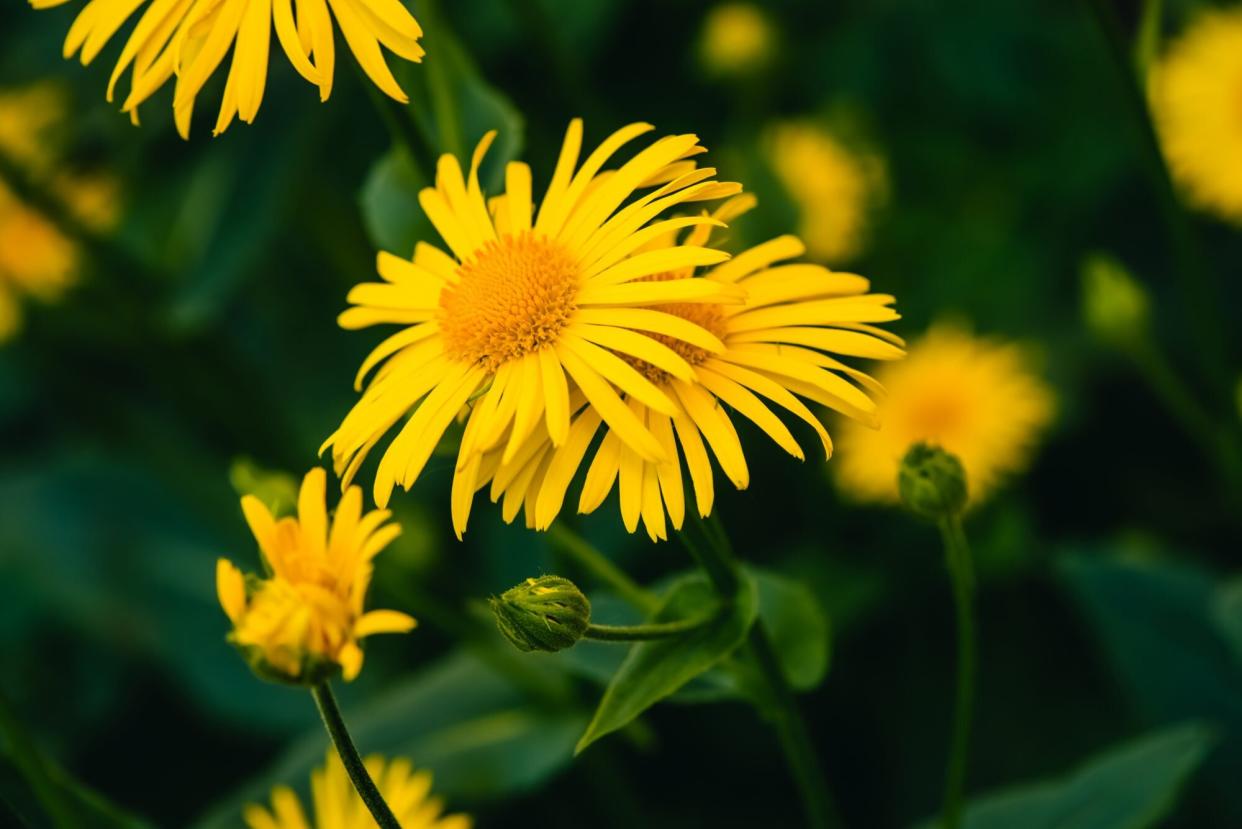What Is Arnica? All About This Herbal Remedy, Including How and When to Use It

Getty / daniilphotos
Arnica is a perennial flower that grows on mountains in Europe and North America. Its full name is arnica montana and it's part of the Asteraceae family, which also includes familiar plants like marigolds, sunflowers, ragweed, dahlias, and chrysanthemums. With its slim yellow petals and golden center, the bloom looks a lot like it's white-petaled cousin, the daisy.
Related: The Surprising Benefits of Lemon Water
What are arnica's homeopathic uses?
As a homeopathic treatment, arnica comes in the form of a topical gel, cream, or ointment or in a heavily diluted pill form, and has three main effects, says Christophe Merville, director of education and pharmacy development at Boiron USA, a homeopathic medicine manufacturer. "It is a mild analgesic—pain reliever; it has anti-inflammatory properties, [so it] relieves pain and swelling from inflammation, and it is an anti-ecchymotic—it decreases swelling and bruising," says Merville. The gel, cream, and ointment target pain sites in the same way, while the pills, taken orally, work on a patient's entire body. "It is an advantage for situations when it would be impractical to use a topical form: delayed onset muscle soreness of the whole body after a long workout, stiffness from overexertion, extensive bruising," says Merville. Dr. Bernardo Merizalde, a board-certified homeopathic physician, recommends arnica for concussions and contusions. "The topical preparations are used a lot in sports," says Merizalde. "Both my children used it regularly playing varsity sports—each had a tube in their bag."
Scientific studies of arnica have attempted to measure its effectiveness in treating osteoarthritis, preventing bruising after surgery, reducing vision problems in patients with diabetes, and soothing sore muscles after exercise, but results have been mixed. "Studies on arnica are difficult to put in place essentially because it is difficult to reproduce the effects of trauma or overexertion in a controlled environment," says Merville. "The main advantage is the associated actions on swelling, pain, and bruising—this makes arnica valuable in post-surgical treatments."
Are there any safety warnings associated with using arnica?
Since arnica is toxic at a certain level, users should never ingest the product in concentrations higher than those used in food; gels, creams, and oils should never be applied to broken skin; patients with allergies to ragweed or other members of the plant's family should avoid it, and pregnant women should always check with their doctor before taking any new medicine. But because it's homeopathic, says Merville, arnica won't interact negatively with other medications or the blood clotting process. Merizalde cautions patients to speak to their doctor before taking the pills. "I would not recommend the tablets for self-medication without having studied homeopathy sufficiently," he says. "It doesn't take much, but it is necessary; you need to understand what you are doing. The use of measurable dosages of arnica can cause liver damage, so it should be used for short periods of time, and under the supervision of a physician, preferably one who is knowledgeable about homeopathy."
Does arnica have non-medical uses?
According to the National Library of Medicine at the NIH, arnica is used in small safe doses for flavoring in drinks, candy, puddings, ice cream, and other commercially prepared foods, and in personal care products like anti-dandruff treatments, makeup, and perfume.

